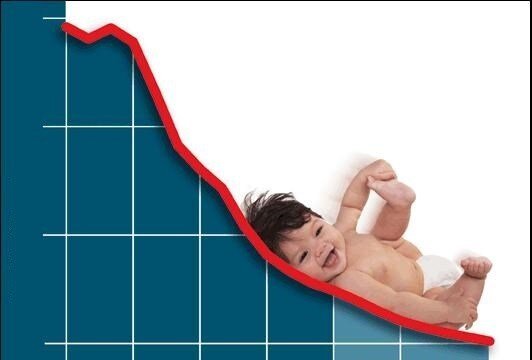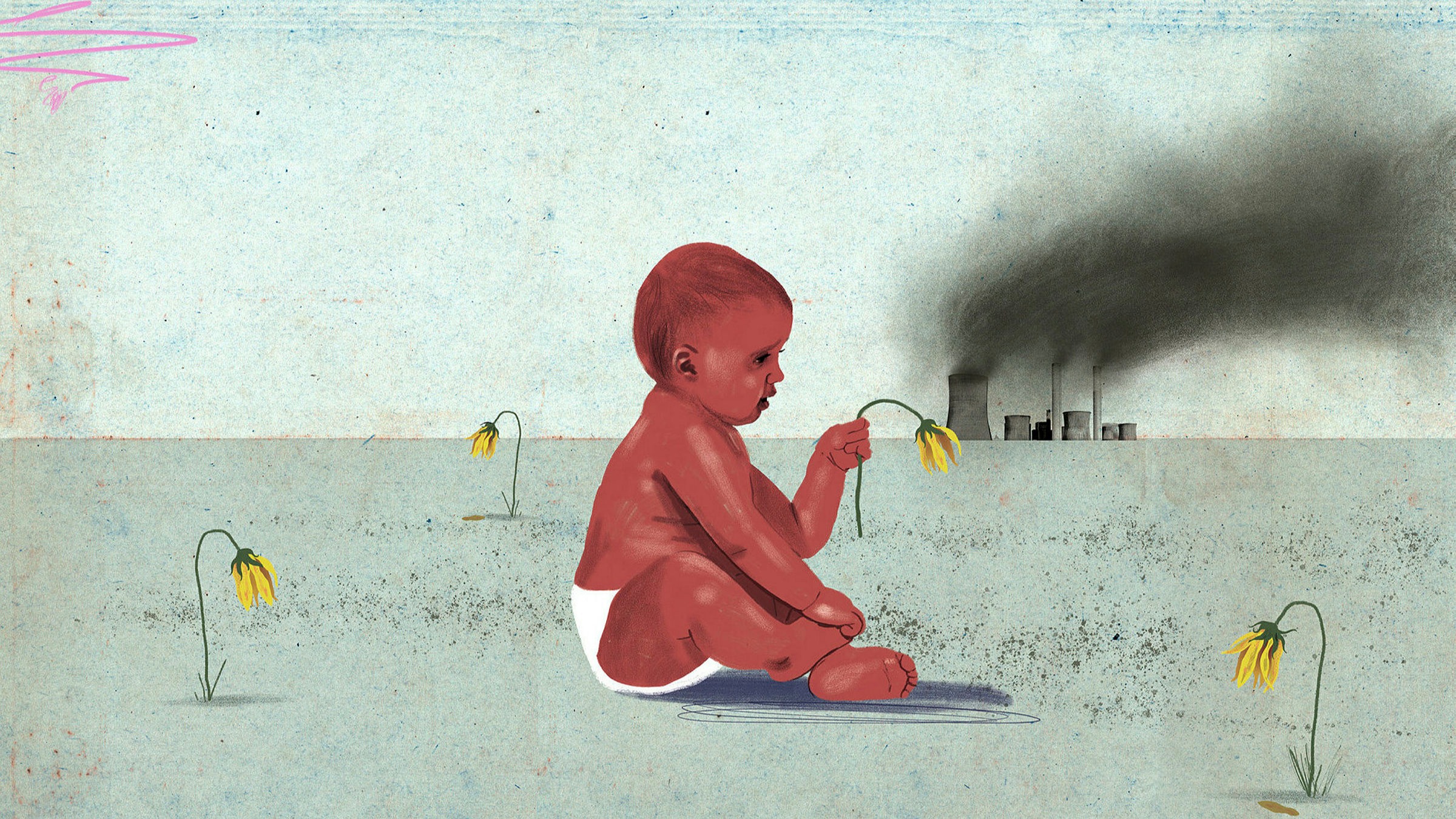US Birth-Rate Declines Sharply: Least Talked About Impact Of Recession And Covid-19.
US couples are having fewer children than they want because of economic and social obstacles.

US birth-rate declines sharply compared to 15 years ago, economists are concerned about the long-term effects of a declining population.
Why are U.S. women and couples having fewer children than they say they want?
Couples frequently delay having kids for a while when the economy is in bad shape. However, birth rates did not increase even in the years that followed the Great Recession. Instead, fertility rates in U.S. have generally kept declining and reached a record low in 2020. The implications of this prolonged downturn have already begun to be seen in state finances. A major source of fiscal uncertainty for nations is the trajectory of fertility since reduced working-age populations might eventually jeopardize revenue bases.
One of the many demographic challenges governments are facing is fertility: Long-term difficulties for governments will include the ageing of the population as a whole and the widespread exodus of Baby Boomers from labor force, in addition to recent falls in foreign migration and life expectancy. As a result of the pandemic aggravating some of these problems, overall U.S. population increase fell to a historic low.

Current generations of U.S. families have been altered by shifting cultural standards and other variables. Birth rates plunged in the early 1970s after the baby boom of 1946 to 1964, but changed only slightly in the decades that followed. Another major tipping point was the Great Recession; fertility had been steadily increasing in the years until 2008, before plummeting. The most recent figures, which span the year 2020 and represent children born before the pandemic, reveal that 43 states experienced their lowest overall fertility percentage in, a minimum of three decades. Since then, it has largely continued to decline.
The average national fertility rate during the ten years concluding in 2020 was 15.9% lower than that average, and in ten states, the declines were greater than 20%. Despite frequently seeing substantial population growth as a whole, mostly owing to migration, predominantly all Western states headed the way in suffering the most drastic long-term fertility rate decline.
A number of states have acknowledged decreased fertility in their most recent budget plans or revenue projections. In the fiscal 2023 budget proposal for California, for example, Governor Gavin Newsom referred to the conjunction of premature retirements brought on by the global pandemic along with decreased fertility and migration rates. With increasing expenses for housing and an increasingly scarce real estate market, it may become ever more challenging for the remaining working adults in California to support older adults.
Total fertility rates have decreased as a result of a drop of over fifty percent in adolescent fertility rates nationally since a decade ago. A Pew Research Centre study identified the Great Recession, a rise in the proportion of teens who claim no experience with sex, and increased knowledge of (and usage of) effective contraception as contributing causes.

For instance, Colorado, a state that also saw one of the highest overall decreases, saw a significantly lower than normal number of adolescent births over the ten years that ended in 2010. The state said that the decline was mostly attributed to significant spending on increasing availability of reversible contraceptives with long-lasting effects and providing operational assistance for family planning initiatives. The State Demography Office additionally ascribed Colorado’s general decline in fertility to women deferring pregnancy to seek education, a reduction in international immigrants to the state, as well as the decline in adolescent pregnancies, in addition to the decrease in teenage births.
The alteration in the composition of American households is explained by a long list of additional socio-economic issues. Researchers hypothesized that decreasing fertility rates were a reflection of significant societal changes that were difficult to define or evaluate in a recent paper in the Journal of Economic Perspectives.
One of the most noticeable cultural trends that has affected birth rates has been Americans postponing or avoiding marriage. Women are getting married at a later stage of life, and single women have birth rates that are under fifty percent of married women. The fact that women are deferring parenthood to later stages in life is another factor in the decline in fertility rates among women who are twenty-somethings, that has greater offset gains in fertility rates amongst women in their late thirties and forties.
According to a new study by the Brookings Institution, young women nowadays will have fewer babies on average during their entire lives than women did in the past. A growing percentage of American adults with no children said they were reluctant to ever have kids, according to the Pew Research Centre poll.
Impact of lower birth-rate on US
Cost reductions might result from fewer births. Enrollment is declining in many school districts, and a steep decline in adolescent pregnancies has already contributed to curbing the increase of health expenses. Although many of the short-term fiscal implications of declining fertility, such as lower costs for schooling and child care, should be favorable for state budgets, the fall might eventually result in a loss in significant income sources, matching declines in the labor force. Governments would have resource issues in the ensuing decades since a lower labor force will probably reduce sales, earnings, and additional revenue-generating streams.
In the upcoming decades, low fertility is projected to have an impact on various important revenue streams. The degree to which a state’s revenue is vulnerable to low fertility depends on its tax system; states which rely substantially on taxation of individuals run higher risks compared to states which rely heavily on less vulnerable revenue streams like corporate taxation and severance taxes collected on extracting natural resources.
Nowadays, reduced fertility is encouraging women to enter the labor field, enabling higher state income tax receipts. But someday there might be fewer individuals paying income taxes since now women are planning to have fewer kids than they did in years earlier. For instance, Colorado’s fiscal and budgetary forecast issued in March predicted that declining birth rates will start to have an impact on the labor force in the state within a period of 5-6 years.
In a study released by the Federal Reserve Bank of Kansas City at the end of 2013, it was calculated that anticipated shifts in demographics from 2011 to 2030, which additionally take into account ageing populations, would all together decrease state and local tax on private income earnings by 2.4% across the nation, alongside the impact on subsequent revenue from sales taxes expected to be comparatively small.
However, in states which primarily depend on sales taxes, that generate roughly half of all state tax income, cutbacks in sales taxes primarily a result of decreased fertility still constitute a future risk. Data from the Census Bureau show that in Florida, Nevada, South Dakota, Tennessee, Texas, and Washington, taxes on sales constituted a minimum of 75 percent of total tax income in the year 2020. The most substantial disadvantages of low fertility are unlikely to be seen for a few decades, when today’s kids are old enough to start purchasing more and contributing significantly to tax revenues. Hence, the fall in fertility may result in less tax income, as well as less federal aid for the states.
Fertility patterns will additionally have an impact on property taxes, a significant source of income for numerous local governments and school systems. The Tax Structure Commission of the Vermont Legislature anticipates that the current shift favoring smaller families will also result in lower evaluated values for bigger properties, which will result in less support for education through property taxes. Authorities in the state, which for a number of decades experienced the lowest fertility rate within the country, have looked at remedies. A child tax credit was approved by legislators with the goal of rendering starting a family less expensive.
In the upcoming years, the unprecedented drop in fertility will have an impact on almost every aspect of state finances. Other budgetary impacts will be quite small or are unlikely to be realized for decades, while few have already been apparent. There are several consequences for different states: Budget challenges affect states with declining workforces the most because they depend greater than the rest on taxes like income and sales, which are susceptible to population losses. Migration along with other demographic changes will also have an impact on a variety of revenue and expenditure sources.
Most states are currently in a primarily healthy financial situation, with several reporting sizable budgetary surpluses. In the past few years, lower birth rates have resulted in noticeable cost reductions. However, as discussed, if this low fertility continues, states are going to have to concentrate more on finding alternative methods to expand their revenue bases in order to avoid long-term problems.
Published By Naveenika Chauhan




